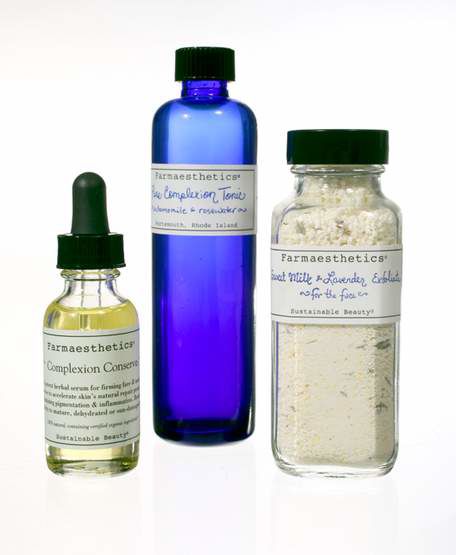The modern apothecaries
Published 5:00 am Wednesday, July 13, 2011

- Erika Pahk shows Kota Furui products at In Fiore, a line of body balms, cold-pressed herbal infusions and facial oils in San Francisco on June 29. Skin care consumers are moving toward simpler times and turning to brands with natural products or naturally derived ingredients.
These days, even mainstream beauty creams sometimes make such improbable claims that they might as well be swarthy Lotharios. Think Nivea’s My Silhouette!, whose maker was fined $900,000 last week by the Federal Trade Commission for suggesting that consumers could slim down just by applying it.
Is it any wonder that some consumers are turning to modern apothecary brands — like Aesop and Malin+Goetz — that position themselves in the market as throwbacks to simpler times, when service was one-on-one and ingredients were pronounceable?
In a world when many cosmetics are mass-produced with mysterious chemicals, these luxury brands are bottling “authenticity” and the idea of transparency with oils, grains and herbs.
But once out of the bottle, applying them might not necessarily be simple. It’s not always obvious how to use a powdered cleanser (mix it with water, cream or yogurt) or what on earth a hydrosol is (a liquid, sometimes used as a toner, made by distilling water through plant material).
Some apothecary brands literally have a “kitchen chemist” or herbalist mixing batches of skin care products and dispensing product advice by email or phone. Emma Graves, an herbalist and aesthetician and the founder of the New York-based line Between You and the Moon, for example, has a Sow Your Wild Oats powdered grain cleanser she mixes herself by five-pound batch.
Consumers who once might have put their faith in a doctor-endorsed brand to keep their skin in tip-top shape now sometimes turn to brands with naturally derived ingredients or natural products, which are viewed as “healthier” and “safer to use,” said Karen Grant, vice president of NPD Group, a market research firm.
Medical jargon is so commonly used to market skin care, Grant added, that “we understand, ‘Here’s the clinically proven results from this sample.’” But apothecary brands might offer a “gentler product” and say generally “it will affect a change.”
Julie Elliott is the creator behind the growing apothecary brand In Fiore, a line of body balms, cold-pressed herbal infusions and facial oils based in San Francisco with 10 employees. Back in 1999, when her line was all balms and oils, buyers were “afraid,” she said.
“Americans generally want lotions,” Elliott said. “When you’re using oils or balms, it really is about taking time out for yourself, taking time to massage oil into your skin and allowing it to absorb.” But now, she said, “People are coming around.” Americans are no longer spooked to the same degree by facial oil, and she believes that a growing factor in their popularity is simplicity. “We just need to manage our skin. It doesn’t need to be that complicated.”
Indeed, plain-spoken apothecary brands can be mistakenly viewed as an alternative to “chemical-laden, traditionally formulated, magic-claim-making products,” said Melisse Gelula, a founder of the wellness website wellandgoodnyc.com.
Thanks to the Internet, smaller names like In Fiore, Between You and the Moon and Farmaesthetics (from Newport, R.I.) have gained a foothold without many brick-and-mortar outposts, or counter space at department stores.
But the low overhead of online commerce isn’t the only reason apothecary brands are in vogue, said Karen Young, chief executive of the Young Group, a marketing and branding company, and who used to be a vice president for marketing at Lancome.
“It’s a convergence of forces,” Young said, pointing to baby boomers looking for alternatives to their current choices in food and skin care; skepticism toward big companies; and a catch-all movement she characterized as “holistic, organic, do your yoga and eat your vegetables.”
Allison Hodge, a yoga teacher in San Francisco, now uses six In Fiore products, but said she was “terrified” to use their Pur facial oil to balance her oily skin, until the saleswoman convinced her to try. Now, Hodge, 32, said: “There’s a little sheen, but it doesn’t feel like you coat your skin with baby oil. It’s more like your skin is like, Yes!”
Emily Weiss, editor of the beauty website Into the Gloss, is also a fan of apothecary brands.
“An old ingredient is just as a great as something made in a lab that promises to make you look 10 years younger,” said Weiss, 26.
She said she heard about Aesop, a unisex Australian brand with brown bottles of parsley seed cleansing oil and jars of camellia nut cream, that has been sold at Barneys, from Gaia Repossi, the jewelry designer, yogi and vegan, who used to fly to Paris to stock up on it at Colette, the Parisian boutique.
Aesop doesn’t sell quick solutions, he said, but has a balanced approach to skin care: eat well, sleep, exercise, invest in exceptional products.
Still, just as many Americans have begun eating locally grown foods, Brenda Brock, chief executive of Farmaesthetics, wants to shorten the time between the fields and your dressing table. Synthetic ingredients “cripple the potency of herbs,” she said.






